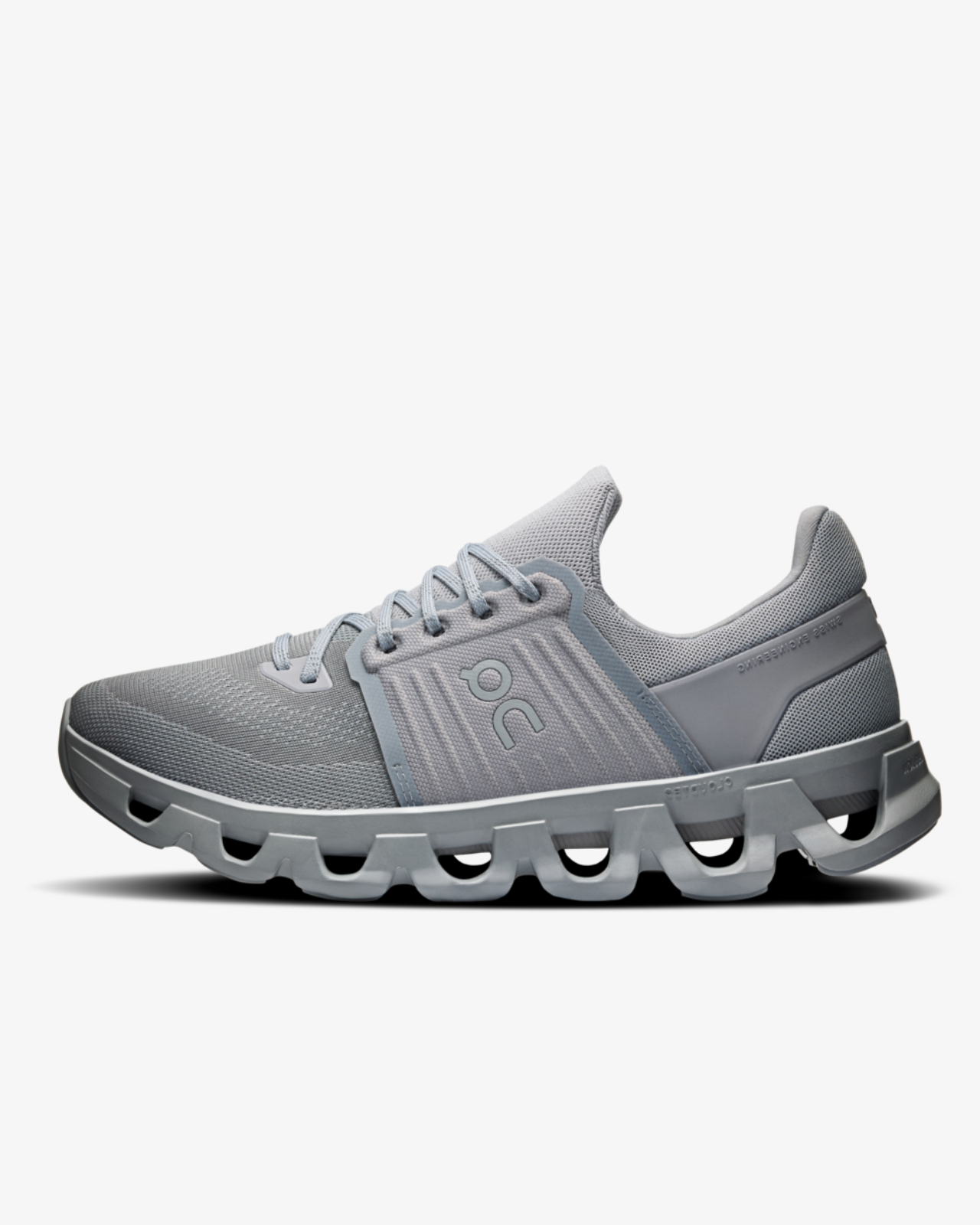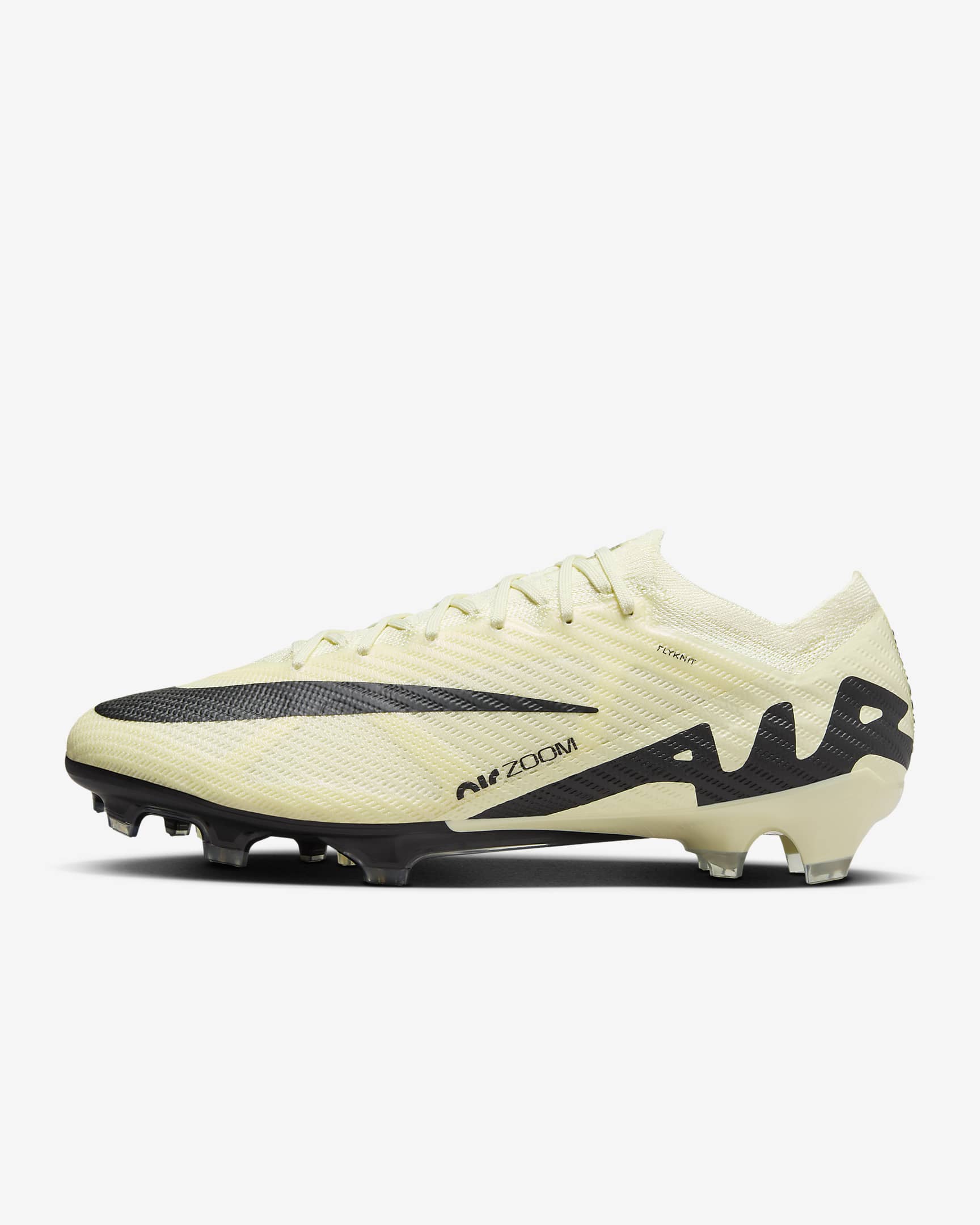Do you remember your first football boots? Heavy, stiff and often uncomfortable. Today's football boots are true technological marvels – ultralight, flexible and designed for maximum performance on the pitch. This evolution is no accident, but the result of decades of innovation and continuous technological improvement. Let's take a look at how the revolution in football boot design changed the game forever and what we can expect in the future.
From traditional models to Nike Flyknit technology: Evolution of football boots
Football boots have come a long way from the heavy leather models that footballers wore until the 1980s. Traditional football boots were designed primarily for durability, with little attention to detail or player comfort.
The real revolution began when major brands realized that football boots could be more than just protection for the feet, but a tool for improving performance. One of the key moments in this evolution came on March 26, 1987, when Nike introduced its first Air Max technology, which would later influence football models.

Important moments in the technological revolution:
- 1980s - Shift from all-leather to lighter synthetic materials
- The 1990s - The emergence of specialized boots for different terrains
- 2000-2010 - Focus on weight reduction and improved traction
- 2012 - Introduction of the revolutionary Nike Flyknit technology
- 2014-present - Integrating innovative technologies for personalized fit
The industry revolution reached a turning point with the introduction of Nike Flyknit technology. Nike's design team created a real breakthrough with this innovation. "We wanted to create something that felt like a T-shirt for your feet," says Toby Hatfield, one of the company's lead engineers.
But what exactly makes Flyknit so special? This technology allows for the creation of a strong and ultra-light Nike Flyknit upper that fits the foot like a second skin. Imagine a mesh upper that is both soft and flexible, yet tough enough to withstand the intensity of professional football.
How modern innovations are changing the game of football players
Modern football boots are engineering marvels that allow players to reach their maximum potential according to their playing style. What do the best footballers in the world need? Precision, speed, control and comfort – and all these elements are integrated into today's models.

Key improvements in modern football boots:
| Technological innovation | Benefits for the player |
|---|---|
| Ultra-light Nike Flyknit upper | Better ball control, shoeless feel |
| Advanced sole | Provide excellent traction, allow quick changes in direction |
| Softening technologies | Reduces stress on knees and ankles |
| Personalized fit | The shoe adapts to the shape of the foot |
| Innovative materials | You can wear them without socks for maximum sensation |
"When we design football boots, we don't just think about the look. We focus on 'how to help players express their style on the pitch,'" says one of the leading designers in the sports industry.
Innovations like Flyknit and Nike Free technologies bring a level of articulation to the shoe that was previously impossible. They are easy to bend and reduce restricted movement, giving players the freedom to move more naturally.
Interestingly, on March 26, 2014, exactly 27 years after the first Air Max, Nike introduced a revolutionary football boot that integrated the best aspects of its running technology onto the football pitch. This is an example of how innovation in one area of the sports industry can transform another.
The future of football boots - technologies to come!
What does the future of football boots hold? The technological revolution shows no signs of slowing down. Here are a few trends that are already taking shape:
- Customization to the extreme - 3D printing and scanning allowing the creation of shoes perfectly tailored to each player's anatomy
- Smart materials - Adaptive fabrics that change their properties according to conditions
- Biomechanical data - Shoes equipped with sensors that provide performance information
- Eco-Innovations - Sustainable materials that don't compromise functionality
Innovative technologies will continue to transform not only the functionality but also the appearance of football boots. Classic designs are combined with futuristic elements, creating models that are both practical and visually impressive.
Understanding biomechanics is becoming increasingly important in the design of sports shoes. Manufacturers are investing millions in research into how different components of the shoe affect the movement, speed and endurance of football players.
How to choose the right football boots for your playing style?
- Determine your position - Defenders need a stronger build, attackers need a lighter one
- Analyze the terrain - Different surfaces require different types of cleats
- Consider your playing style - Technical players prefer a thinner upper for better feel
- Don't underestimate comfort - Even the most technologically advanced shoe won't help if it's not comfortable
Regardless of time and technological advances, the purpose of football boots remains the same – to protect the feet and improve the performance of players. But the way in which modern models achieve this is truly revolutionary.
Conclusion
The revolution in football boot technology is a remarkable example of how innovation and discovery can transform not just the equipment, but the sport itself. From heavy leather boots to ultra-lightweight, intelligent designer shoes, the path has been marked by a relentless pursuit of perfection.
Today's football boots are the result of decades of research, innovation and attention to detail. They provide players with unprecedented comfort, traction and control, allowing them to reach new heights in their performance. All of this can be found in the BLSTC store.
And what about the future? As the co-founder of Nike says: "There's always a way to get better." The same goes for football boots - continuous development, driven by passion for the game and the pursuit of perfection.
Isn't it amazing how something as basic as a shoe can undergo such a transformation? This evolution continues to this day, and we can hardly imagine what innovative technologies await us in the future.






